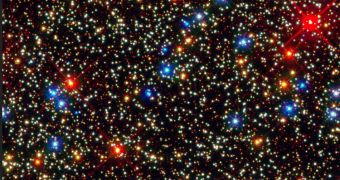According to the conclusions of a new astronomical study, it would appear that the distribution of stars in galaxies that appeared early on in the history of the Universe was different from what we see today.
The discovery is very important, since it suggests that one of the formulas experts have been using for a very long time in astronomy is wrong. The formula deals with calculating the original mass of galaxies.
Astronomers rely on this set of calculations to figure out how much mass a galaxy had when it appeared. Knowing this amount is very important for understanding overall galactic evolution patterns.
This investigation, which surveyed a total of 260 galaxies, uncovered that galaxies which formed later on after the Big Bang tend to display stellar distribution patterns that cannot be explained through observations of older galaxies.
The formula that may need to be revised is called the initial mass function (IMF), and is used to measure how much combined mass all stars in a galaxy have. By establishing this value, astronomers can then figure out how the cosmic structure grew over time, Space reports.
An international team of astronomers found that the first galaxies displayed a distribution of low- to high-mass stars about 300 percent more massive than in newer formations. The group analyzed both elliptical and lenticular galaxies: the latter combine elliptical and spiral traits in the same structure.
Older galaxies were found to contain vast amounts of lower-mass stars. “Small stars are numerous, and so provide a lot of mass, but little light,” University of Oxford astronomer Michele Cappellari says, quoted by Space.
Her team found that the IMF is not constant across all galactic types and ages. "The IMF is necessary to convert the light we observe from galaxies into the stellar mass that all models predict. Up to now, astrophysicists assumed this conversion could be performed with a universal IMF,” the expert adds.
“Current models use the wrong galaxy stellar masses in the comparison, and will have to be revised,” says Cappellari, adding that researchers still do not have a satisfactory explanation for this variation.
“It may take years before astrophysicists converge on an explanation,” she explains. At this point, existing computing power is enough to produce accurate models of star formation and galaxy evolution.
“What seems clear […] is that the oldest galaxies in the universe formed their stars in much more dramatic and intense events, while spiral galaxies formed stars more quietly for the major part of their lives,” the expert writes in a paper published in the April 26 issue of the top scientific journal Nature.

 14 DAY TRIAL //
14 DAY TRIAL //